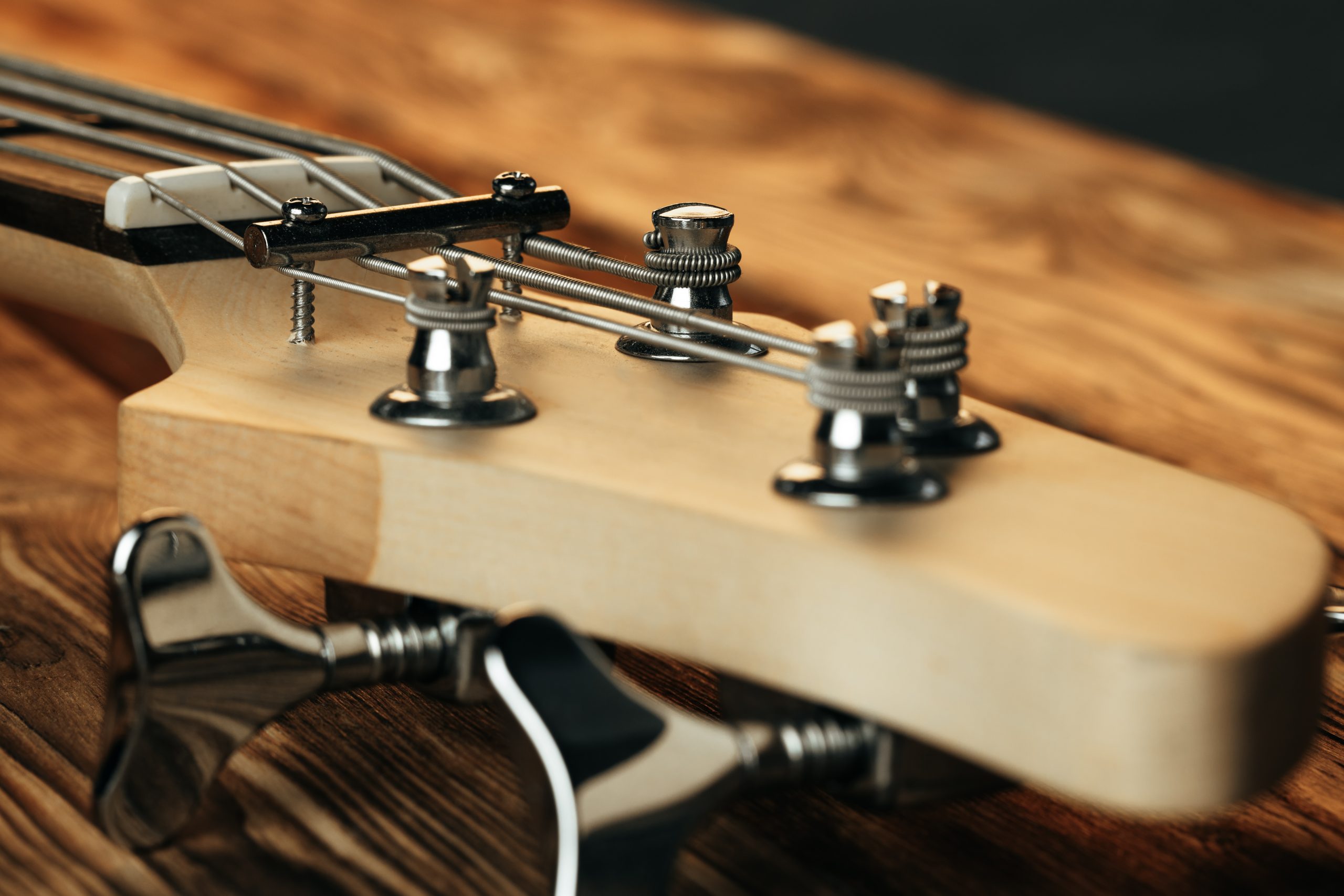KEY TAKEAWAYS:
- The standard four-string bass guitar tuning is E-A-D-G.
- Users can connect a clip-on tuner to their bass guitar neck and adjust the strings with the tuning pegs.
- Consider tuning your bass at least once during a heavy playing session to ensure the intended pitch.
If you’re shopping for the best bass guitar, you need bass guitar tuning tips to get an accurate bass sound. Experts recommend tuning your bass guitar before every practice session, and some musicians even tune their instrument several times during jam sessions, performances and even while practicing for long periods of time. . So, keep reading to learn how to tune a bass guitar.
How to Tune Your Bass Guitar
While it isn’t as complicated as wiring an electric bass guitar, there are various tuning options. For this article, we’ll cover the two most common tuning methods for these musical instruments. or this article, we’ll cover the two most common methods.
The first method is tuning by ear with a reference note from a smartphone app or in-tune instrument. For the second method, musicians can utilize an electronic tuner, one of the basic accessories for bass players. Consider investigating how to size a bass guitar for the most comfortable playing experience.
It’s important to note that some bass guitars have extra strings, while the standard bass guitar has four strings tuned to the notes E, A, D, and G. To get your desired sound, the strings need to be turned to the correct pitches in order on these stringed instruments.
Method 1: Tuning by Ear
This is a more complicated method of tuning than using a quality bass guitar tuner, but most expert bassists recommend that beginner bass players learn how to tune by ear. You can get a reference note from a smartphone, tuning fork, or an in-tune instrument like a regular guitar or piano.
- Difficulty: Easy
- Time Required: 2 minutes
- Total Steps: 5
- Tools Needed: Smartphone, tuning tool, or an already tuned instrument
Step 1 – Use a smartphone/mobile device app or an already tuned instrument, like a piano, to provide a reference pitch. Another way to tune a bass guitar is by using an octave, which is a device that produces a reference pitch to tune the strings to.
Step 2 – To tune a standard bass guitar, start with the thickest string with typically the lowest pitch (E), listen to the vibrations of the strings, and tighten the bass string with the tuning key closest to the fretboard. Stop tightening the key when you no longer hear a difference between your bass and the reference note.
Step 3 – Play the fifth fret on the E-string to get an A-note, the same pitch as the following string on the bass. Compare the tones of the 5th fret on the E-string and the open A-string, and adjust the tuning key until they match.
Step 4 – Move onto the A-string, the second string, and repeat the process from step 3. Compare the tones from the open D-string and the fifth fret on the A-string. Tighten the tuning peg until the dissonance goes away.
Step 5 – Repeat the process from steps three and four on the last two bass strings, and your bass will be ready to play. The thinnest string with the highest pitch (opposite of the lowest string) is typically tuned to the G note.
Method 2: Using a Guitar Tuner
This is the easiest tuning method and the most user-friendly option for getting a bass to the perfect pitch. A beginner bass guitar player should start with this tuning process to ensure they reach the correct tones.
- Difficulty: Easy
- Time Required: 2 minutes
- Total Steps: 3
- Tools Needed: Tuning tool
Step 1 – Attach the clip-on tuner to the headstock of your bass guitar.
Step 2 – Play your top string, the lowest note, and adjust the tuning key until your clip-on tuner reads as an E-note.
Step 3 – Repeat step 2 for the final three strings and ensure that the detected tone on the clip-on tuner matches the intended notes, A, D, and G.
How to Tune a Bass Guitar FAQs
What is Drop D tuning?
Musicians often utilize Drop D tuning in heavier music like rock and metal for the expanded tonal range. Players can tune down their E-string to a D, making it a whole step down from the next highest string.
How to keep your bass guitar in tune longer?
Ensure that your bass guitar stays in its case while traveling from gigs or practice sessions. In addition, keep your bass clean and in a climate-controlled environment. Since most bass guitars are made of wood, humidity and changes in weather can affect your tuning.
What is the standard tuning for 4-, 5-, and 6-string bass guitars?
A four-string bass standard tuning is E-A-D-G. A five-string bass adds a B-string for a deep-sounding tone, and the correct tuning is B-E-A-D-G. The proper tuning for a six-string bass adds higher notes from an added bottom string, and the right notes are B-E-A-D-G-C
Stats
The standard four-string bass guitar can produce 36 unique notes. (Source)
Tips & Warnings
-Tip
Make sure to tighten the tuning pins while matching the correct note. If not, you’ll have loose bass guitar strings that might slip off.
-Warning
Changes in weather and humidity can affect tuning, so keep your bass in a temperature-controlled space.























